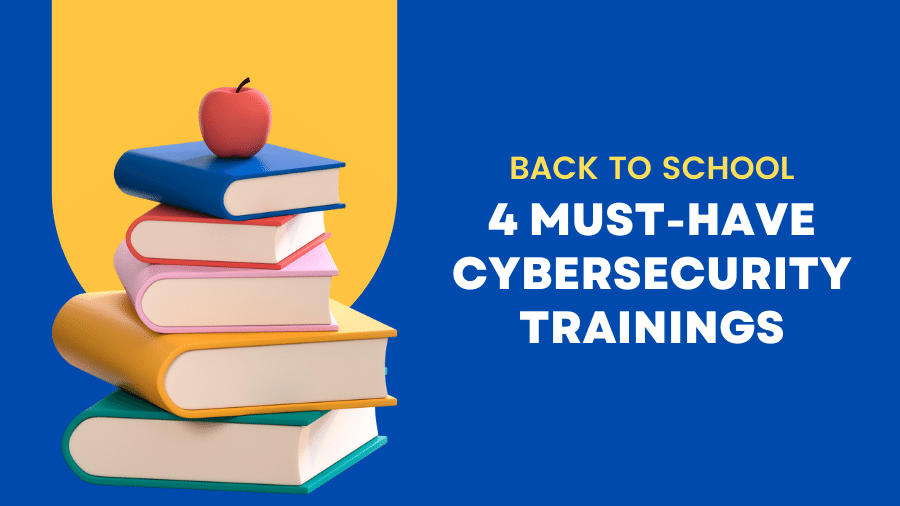It’s back-to-school season! Soon, our kids will return to the classroom, where they will relearn the information from the prior school year to ensure that they were able to retain that knowledge. There’s nothing wrong with needing a refresher, and this is true for both students and your employees.
If your staff has not had a refresher course on your cybersecurity practices sometime in the last year, now is the perfect time to get them up to speed. After all, they can’t defend themselves from cyber threats if they don’t know how. That’s why it’s so important that your team has bought into a cyber-secure culture and is aware of potential threats that could impact your organization.
Cyberthreats come in all shapes and sizes, but an overwhelming majority of successful cyber-attacks can be attributed to human error, which is the main reason your employees need cybersecurity refresher training at least once a year. A lack of training can open your school up to hackers and other cyberattacks by way of phishing e-mails, weak passwords, unsafe browsing, and more – which jeopardizes your entire organization. In many cases, insurance won’t cover your claims if your employees have not undergone regular training. Finally, no one wants to associate with an organization that isn’t keeping their information protected. It doesn’t matter how big or small your school is – you must make an effort to ensure that all of your employees have gone through cybersecurity training. If you’ve never trained your team on cyber security and are unsure of which topics to cover, don’t worry because we’ve put together a list of the most important topics to discuss.
#1 Password Security
Nearly every employee has their own login to access network data and applications. When selecting the passwords for this login, employees need to use strong, unique passwords that utilize letters, numbers, punctuation and other special characters and are not shared between accounts. You should also ensure that your employees regularly change their passwords. For an extra layer of security, you can utilize multi-factor authentication so you’ll know that those logging into an account are who they claim to be.
#2 E-mail
Your employees should be cautious of any e-mails that come from addresses outside of the organization. When your employees go through their e-mail, they should not open e-mails from people they don’t know or have not communicated with in the past. Unless they know exactly where the e-mail has come from, they should not open any links or attachments within it.
#3 Social Media
Personal accounts should never be set up through a school e-mail address. When posting on social media, your employees should be cautious about what they post in regard to work. They shouldn’t disclose private information about your school or your students on social media. If they did, it could be devastating to your school’s reputation as well as your cybersecurity.
#4 Protecting School Data
At the end of the day, your cybersecurity practices are in place to protect student and staff data, and your employees have a legal and regulatory duty to protect sensitive information. A reckless disregard for protecting this information can quickly cause trouble and has the potential to bring forth fines and lawsuits.
Establishing strong cybersecurity practices and ensuring your team is aware of them through training is the best way to protect your organization from cyber threats. By implementing training on these four topics, you’ll be on your way to developing a cyber-secure culture.

